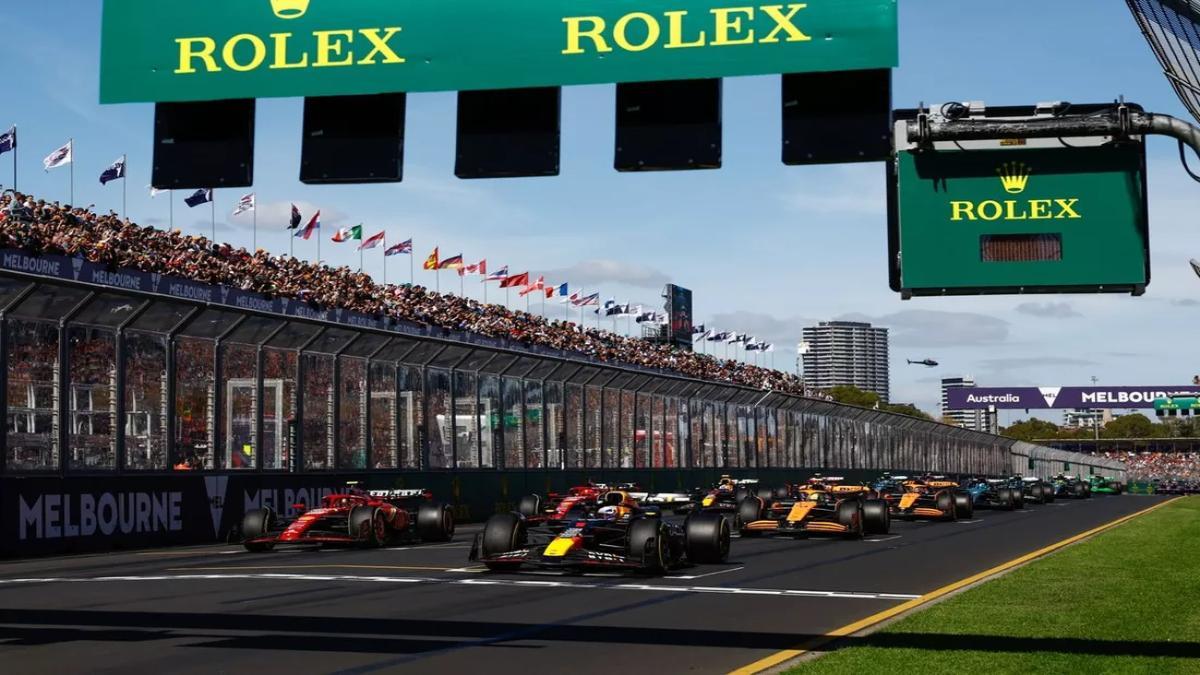(Motorsports news) Over the weekend of the F1 Chinese Grand Prix, teams had last week discussed a change to the regulations to clarify a part of them that had generated confusion.
In the past, the success of jump starts was determined only by whether the sensors installed in cars by the FIA had detected movement prior to the start signal being issued.
In a few cases, though, cars that didn’t appear to be stopped before the race began were given the all-clear by the sensors and weren’t penalized.
Lando Norris at this year’s F1 Saudi Arabian Grand Prix is the most recent well-known example of this; he moved forward momentarily before stopping before the lights went out. The stewards looked into his conduct, but ultimately determined that there was no need to penalize him because the sensor had not picked up anything suspicious.
At the F1 Commission meeting last week, sporting directors and team executives discussed the regulations, and it has now been decided that they will be strengthened immediately.
The F1 Sporting Regulations have a revised Article 48 called “False Start,” which outlines the new standards for judging rule violations.
The sentence that said jump starts would depend on the transponder’s results has been taken out.
Rather, an offense will be considered to have occurred if a driver is found to have: “moved after the four (4) second light is illuminated and before the start signal is given by extinguishing all red lights,” according to a revised 48.1 a) of the Sporting Regulations.
Although the most recent example is Norris’ movement in Saudi Arabia, a number of drivers have been stopped in recent years for seemingly moving before the lights went down but failing to activate the sensor.
In 2020, Ferrari driver Sebastian Vettel avoided penalties in Japan, while Valtteri Bottas was authorized to start from the lead at the Hungarian Grand Prix.
Returning intermediate tyres:
A provision aimed at encouraging teams to use intermediate tires during rainy practice sessions has also been added to the FIA’s new sports regulations.
Due to a fault in the current wet tyre regulations, nearly all teams at the F1 Japanese Grand Prix last month chose not to run in the rainy second free practice session, fearing that they could need to burn through sets of inters later in the weekend.
This resulted from F1 eliminating a rule that required teams to return an additional set of inters to the FIA in the event that practice was impacted by rainy weather.
Although teams will no longer receive a full set of tires for free, the rules have been changed to require that one pair of intermediate tires be returned prior to qualifying if a practice session is deemed to be wet.
One (1) set of intermediate tires from the five (5) sets allotted to each driver under Article 30.2a)ii) must be electronically returned no later than two (2) hours after the conclusion of P3, according to a new Article 30.5 g).
This rule minimizes the negative effects of any more running on the remainder of the weekend, even though it does not go so far as to say teams have nothing to lose by running during a wet practice session.
Also read: FanCode Adds Germany’s Sports Racing Series DTM to its Motorsports portfolio














